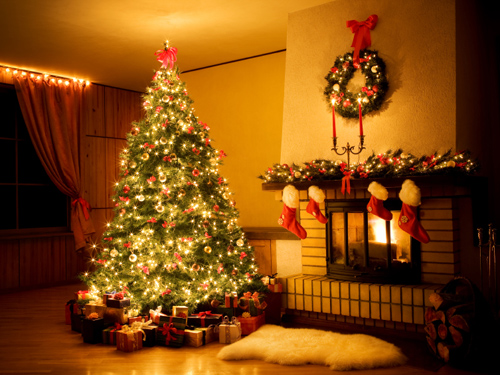11 Dec 2024

Tired Earth
By The Editorial Board

the debate about Christmas trees takes place year after year. We really shouldn’t use real trees and I’m glad that more and more people have stopped using natural trees for Christmas, but are artificial alternatives really better? Here, we’ll be discussing the main pros and cons of using artificial trees versus real trees, so that you can make the best decision and see what the science says.
Artificial Christmas Trees

Artificial Christmas Trees are artificial trees manufactured specifically for the purpose of being used as a Christmas tree. Here, I’ll be focusing only on the most common ones (the ones made from PVC), but you should know that there are also other, more creative alternatives. Most people would be surprised to find out that in many ways, artificial trees actually do more harm to the environment than cutting natural trees; in other words, the idea of artificial trees being eco-friendly is, as a researcher at Kansas State University put it – “an urban myth”.
A peer reviewed study released in 2011 found that the impacts of natural and artificial trees are almost similar, with the artificial ones being slightly worse. The key here is PVC. PVC (polyvinyl chloride) is a petroleum-derived plastic. The main raw material for fake Christmas trees is both non-renewable and polluting, and you can’t recycle it. Furthermore, PVC production results in the unhealthy emission of a number of carcinogens, such as dioxin, ethylene dichloride and vinyl chloride. Also, in order to actually create the needles, lead is often times used – and lead can have a number of significant negative health effects, including kidney, neurological, and reproductive system damage. Touching the tree, especially with your face can be quite hazardous. Also vacuuming around the tree can spread tiny lead particles in the air, which creating an inhalation danger.
It also requires a lot of energy to create and transport the fake trees. You need to reuse the tree for 20 years before it actually the total energy used starts to be less for artificial trees. There is also the problem of transportation, though recent studies have shown that that’s not such a big problem.
“The reality is that the long distance transport from China is pretty efficient,” says Laura Morrison, a Senior Consultant at PE International.
Christmas Trees
“Real” Christmas Trees are almost always evergreen conifers, such as spruce, pine, or fir. The custom of the Christmas trees developed in early modern Germany with predecessors that can be traced to the 16th and possibly 15th century. The history of this tradition has actually nothing to do with Christianity, though many Christians embraced it. Each year, 33 to 36 million Christmas trees are produced in America, and 50 to 60 million are produced in Europe. Naturally, cutting this many trees is a big problem, both ethically and environmentally, but is it worse than polluting ?
Natural tree growers contend that artificial trees are more environmentally harmful than their natural counterparts, but trade groups such as the American Christmas Tree Association claim the exact opposite, so you can’t really rely on their claims considering their obvious bias. What does the science say?
Live trees are typically grown as a crop and replanted in rotation after cutting, often providing suitable habitat for wildlife. However, poor management can lead to poor habitat and soil degradation, but generally, Christmas tree plantations are at least decent habitats. Another main drawback is that you only use them for a short while, and then you throw them away. Sadly, even though they are biodegradable and highly recyclable, Christmas trees are sometimes simply thrown away. But more and more, they are starting to be recycled and used as mulch or used to prevent erosion. Real trees are also carbon-neutral, though emissions can occur from farming activities and transportation. They are also more expensive then artificial trees, since you need a new one every year.
The Conclusion
It’s not possible to say that real or artificial Christmas trees are better. If you really want to have a green Christmas, if you want to lower your negative environmental impact, don’t buy any tree. Decorate your house, maybe get some fallen branches, whatever… just don’t get a tree. If you do want to keep the tradition and get a tree, then this is the main takeaway:
Both natural and fake trees have an environmental impact. Most people don’t know, but artificial trees have a slightly larger negative impact, requiring more energy, polluting and even posing potential health hazards. Cutting down natural trees, even if they are recycled afterwards and have a smaller carbon footprint, is unethical, and you would get a much bigger environmental bonus if you just let them grow. You’ll get a better habitat, more carbon sequestration, better landscapes and so on. This is what science says… the decision is yours. Choose responsibly!
Source: zmescience.com
Comment